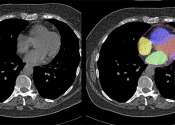Gene therapy treatment increasing body's signal for new blood vessel growth shows promise
Final 12-month data from the EXACT trial demonstrates safety and efficacy results for a vascular endothelial growth factor (VEGF) gene therapy treatment for patients who have advanced coronary artery disease (CAD). The late-breaking ...
May 2, 2024
0
0









